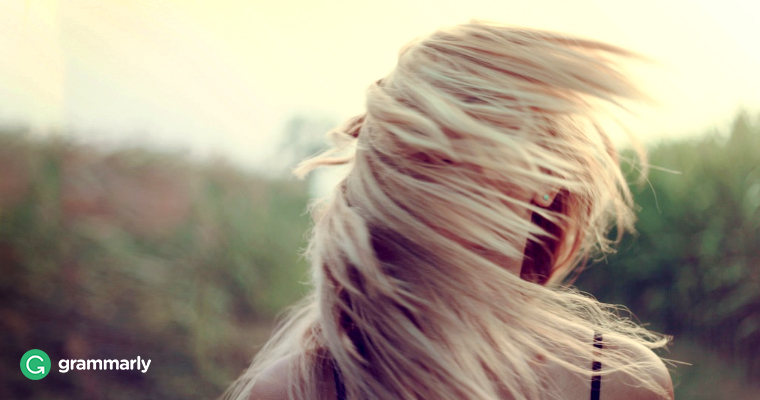
In every culture, there are legends. For example, according to ancient Scottish folklore, women with braided hair kept their sailor husbands safe at sea. Loosening their braids could cause a terrible storm on the ocean. In some Native American cultures, warriors attributed a sort of sixth sense to long hair. They felt their hair helped them to be more alert to danger. The Internet is full of pop psychology articles that claim that hair color influences your personality. Probably the most well-known association is between golden-toned hair and fun. What is that hair color—blond or blonde?
Though Old English already had the word “fair,” blond and blonde came to English via French. As English evolved, these terms became more popular than “fair” to describe light hair color. In French, adjectives can be written in several forms that vary based on the gender and number of what is being described. Look at these examples:
Un homme blond (a blond man)
Une femme blonde (a blond woman)
Deux hommes blonds (two blond men)
Deux femmes blondes (two blond women)
Did you notice the four different spellings of the adjective? English doesn’t usually change the endings of adjectives to reflect gender, but blond/blonde is a rare exception that survived to present day. The French plural endings of French didn’t catch on, but sometimes you will see the American terms for this hair color follow the French pattern. When describing males, you would use blond: He is blond. You can add an E to blond when you describe females: She is blonde.
Not everyone is so happy to use different terms to describe men and women with the same hair color. The American Heritage Book of English Usage warns that referring to a woman as “a blonde” has possible sexist undertones. It is common, and not incorrect, to use blond for both males and females. The difference is indistinguishable in spoken English because the E does not change the pronunciation.
In French, inanimate objects have gender. In English, the word blond (and very occasionally, blonde) sometimes describe the color of such objects. Here are three examples:
“Birch is essentially a blond wood, difficult for most people to distinguish from maple.”
—Planning the Modern Public Library Building, Gerard B. McCabe and James Robert Kennedy
“There are black flecks of something like mica stuck there too, much smaller than the blond sand grains.”
—Aurora, Kim Stanley Robinson
“One of the most approachable styles, a golden or blonde ale is an easy-drinking beer that is visually appealing and has no particularly dominating malt or hop characteristics.” —Craftbeer.com
Do people of a particular hair color really have the most fun? Some people think the legend is true; others swear it’s false. What color is your hair? Whether it’s black, brown, red, or some other hue, you can still have fun! If it’s a shade between golden and light chestnut, you know what to call it. How should you spell it—blond with or without an E? It’s up to you!